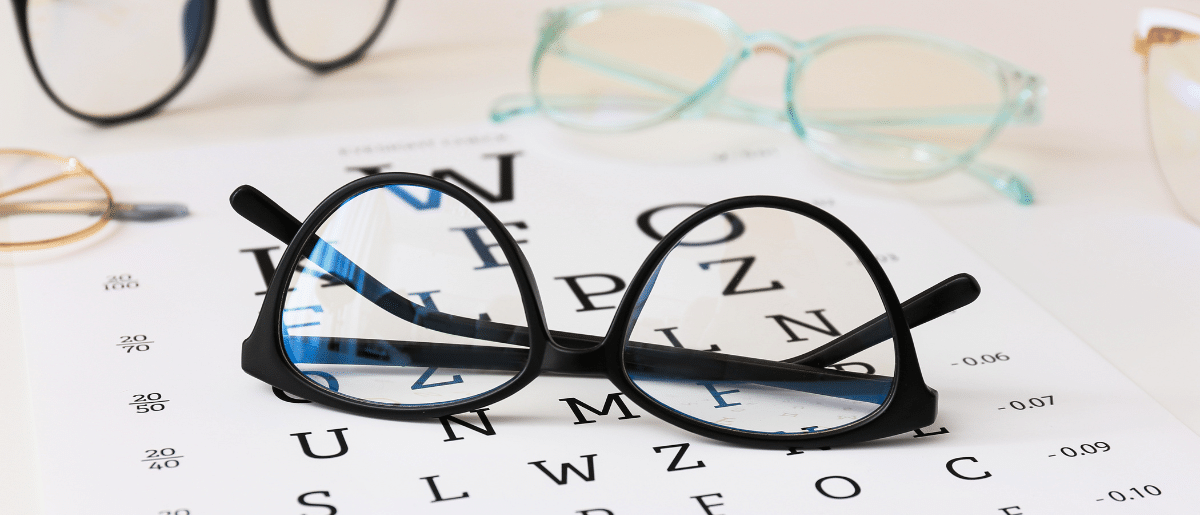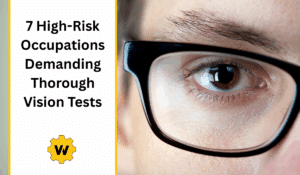Did you know that occupations requiring the most stringent and frequent vision tests are those where visual impairment could directly endanger lives or public safety?
Good vision is essential for safety and precision in many professions, especially those where split-second decisions can mean the difference between life and death.
From pilots navigating the skies to surgeons performing delicate procedures, impaired vision can have catastrophic consequences.
The Bureau of Labor Statistics (BLS) reports that eye-related workplace injuries result in tens of thousands of cases annually, with 18,510 occurring in 2020 alone. Workplace vision problems also contribute to $300 million annually in medical treatment, workers’ compensation costs, and productivity loss.
Here, we’ll explore seven high-risk professions that require strict vision standards, highlighting why regular eye exams are not just recommended, but absolutely critical.
Understanding these requirements can help professionals maintain optimal eye health and uphold the highest safety standards in your fields.
Let’s break it down.
Related Article: Employer’s Guide to Personal Protective Equipment – Eye & Face Protection.
Related Article: 6 Key Steps to Prevent Fatal Workplace Motor Vehicle Accidents.
What Are Vision Tests?
Vision tests are examinations that assess the health and functionality of the eyes, measuring visual acuity, depth perception, peripheral vision, color recognition, and overall eye health.
These tests help detect refractive errors (like nearsightedness or farsightedness), eye diseases (such as glaucoma or cataracts), and other conditions that might impair vision, especially critical in high-risk occupations where safety depends on clear eyesight.
Common Visual Tests:
- Visual Acuity Test
- Refraction Test
- Color Vision Test (Ishihara Plates)
- Peripheral Vision Test (Visual Field Test)
- Depth Perception Test (Stereopsis Test)
- Tonometry (Eye Pressure Test)
- Slit-Lamp Examination
- Retinal Imaging (Fundus Photography/OCT)
- Cover Test
- Pupil Reflex Test
- Amsler Grid Test
- Contrast Sensitivity Test

Statistics on Vision & Occupational Safety
Vision impairment and eye diseases significantly impact workplace safety, especially in high-risk occupations where clear eyesight is critical.
Let’s take a look at some key U.S. statistics highlighting the connection between vision health and occupational safety:
1. General Vision Impairment & Eye Disease Statistics
- Approximately 12 million Americans (3.4%) aged 40+ have vision impairment, including 1 million who are blind.
2. Common Eye Diseases
- Cataracts – affect 24.4 million Americans (17.2%), aged 40+.
- Glaucoma – impacts 4.22 million Americans, with half unaware they have it.
- Diabetic Retinopathy – the leading cause of blindness in working-age adults (20-74), affecting 9.6 million people.
- Age-Related Macular Degeneration (AMD) – affects 19.8 million Americans.
3. The Need for Regular Vision Screening in High-Risk Jobs
- Undiagnosed Vision Problems: More than 11 million U.S. workers have uncorrected vision issues that could impair job performance.
- Effect on Employment: Globally, people with vision-related problems are 30% less likely to be employed compared to those without.
- Preventable Injuries: 90% of workplace eye injuries could be avoided with proper eye protection and regular vision screenings.
High-Risk Occupations Demanding Rigorous Vision Screening
1. Aviation Professionals
- Pilots (Commercial/Military): Require 20/20 corrected or uncorrected vision, depth perception, color vision (Ishihara test), and peripheral vision. Standards are enforced by aviation authorities (e.g., FAA), with mandatory regular screenings. Military pilots face stricter limits (e.g., uncorrected vision ≤6/12).
- Air Traffic Controllers: Need near-perfect distance vision, spatial awareness, and rapid visual processing to prevent collisions. Annual tests are common.
2. Emergency Responders
- Firefighters: Must navigate smoke, darkness, and hazards. Standards typically require ≤20/40 uncorrected and 20/20 corrected vision. Annual exams assess acuity, peripheral vision, and depth perception.
- Police Officers: Mandatory tests for visual acuity (e.g., 20/40 uncorrected, 20/20 corrected), color perception, and night vision due to firearms use and emergency driving.
- Paramedics: Need sharp vision for medical procedures in chaotic environments. Corrective lenses are often permitted, but regular acuity tests are required.
3. Healthcare Surgeons
- Microsurgeons: Depend on exceptional near vision, depth perception, and hand-eye coordination. Pre-employment screenings include Jaeger charts for near acuity and stereopsis tests. Annual reviews are standard to prevent degradation.
4. Transportation Operators
- Commercial Truck/Bus Drivers: Subject to DOT physicals requiring ≥20/40 acuity in both eyes (corrected) and 70°+ peripheral vision. Tests (Snellen / Titmus) are mandated every 1–2 years.
5. Military Personnel
- Combat Roles: Army/Navy/Air Force roles enforce strict acuity, color vision, and depth perception standards. Laser surgery (e.g., LASIK) is often used to meet thresholds.
6. Construction & Industrial Workers
- Heavy Machinery Operators: Need depth perception and acuity to prevent accidents. While not always regulated, employers often mandate Titmus or Snellen tests due to injury risks from debris/dust.
7. Lifeguards
- Coastal/Water Safety: Require uncorrected distance vision ≤6/12 and rapid response capabilities. Contact lenses may be prohibited during duty, necessitating pre-season exams.
Key Patterns in Vision Testing
Regulated commercial drivers, or those in public safety roles, like pilots, face legally enforced tests, while others, like surgeons, follow industry best practices.
So, what are some of the common vision tests used? Take a look:
– Snellen Chart: For testing distance acuity (pilots, drivers).
– Ishihara Plates: To test for color blindness (military, police).
– Jaeger Chart: For testing near vision (surgeons, web developers) .
Although glasses or contacts are often accepted for meeting acuity thresholds, laser surgery, like LASIK, is increasingly used to bypass restrictions.
For detailed vision standards per occupation, refer to your industry’s regulatory sources.
– See AMAS’ Publication on Vision and FAA Standard.
– See Federal Register on FMCSA/DOT’s Qualifications of Drivers; Vision Standard.
Key Benefits of Vision Tests
Vision tests are essential not just for maintaining eye health but also for ensuring safety, productivity, and quality of life.
Here are 8 key benefits of vision tests:
- Early detection of eye diseases
- Correcting refractive errors
- Preventing workplace accidents
- Improved academic & work performance
- Detecting underlying health conditions
- Enhancing quality of life & saving long-term costs
- Monitoring age-related changes
- Ensure compliance with legal standards
Key Takeaways
Vision is a critical asset in high-risk professions where split-second decisions and precision can mean the difference between life and death. From pilots navigating turbulent skies to surgeons performing delicate procedures, the occupations highlighted here underscore the non-negotiable need for rigorous vision screening.
Ensuring optimal eyesight isn’t just about compliance. It’s about safeguarding lives, enhancing performance, and preventing catastrophic errors.
As industries evolve and job demands intensify, employers and regulatory bodies must prioritize regular eye exams and adopt updated vision standards. For professionals in these fields, proactive eye care isn’t optional – it’s a career lifeline.
Whether through advanced screenings, corrective technologies, or workplace adaptations, protecting vision must remain a top priority. After all, in these high-stakes roles, clear sight is synonymous with success.
Stay In Compliance With Worksite Medical
In most cases, OSHA requires medical surveillance testing, and at no cost to employees.
Worksite Medical makes that program easier with mobile medical testing.
We conduct vision tests, silica exam physicals, on-site respirator fit tests (including N95 masks), audiometric exams, pulmonary function tests, heavy metal lab work, and much more, right on your job site.
We also keep accurate, easy-to-access medical records for your convenience. You’ll keep your employees at work, and stay ahead of OSHA inspections.
With Worksite Medical, a mobile medical testing unit — we can bring all the resources of a lab to you. Our certified lab technicians can perform both qualitative and quantitative respirator tests to ensure a perfect fit.
Protect your team and your workplace now with Worksite Medical. Not sure what you need? Try our medical testing wizard here.
Give us a call at 1-844-622-8633, or complete the form below to schedule an on-site visit or to get your free quote.
Convenient, Compliant Occupational Medicine. Worksite Medical – Let Us Come to You!




